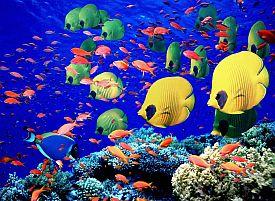Energy, EU – Baltic States, Forum, Legislation, Transport
International Internet Magazine. Baltic States news & analytics
Thursday, 25.04.2024, 19:35
Negotiations enter final straight for major high-level commitments for the Baltic Sea
 Print version
Print version |
|---|
The Declaration will cover a wide selection of topics covering biodiversity and ecosystem services, eutrophication, hazardous substances, shipping, preparedness and response to pollution at sea, along with monitoring, assessment and marine knowledge.
One of the major issues of the Meeting is related to new and updated targets for reducing nutrient inputs to the Baltic Sea in order to reach the Baltic Sea not affected by eutrophication. The new proposed limits for nutrients inputs are the result of a few years of work supported significantly by the Baltic Nest Institute in Sweden and involving national experts in the HELCOM countries. The Meeting will be an important stepping stone towards reaching a Ministerial agreement on sharing the burden of the needed pollution reduction between the Baltic Sea countries and also reflecting the reduction potential from sources outside the HELCOM area. The most recent data on pollution inputs to the Baltic Sea, included in the Pollution Load Compilation 5.5 report, will give insight into the progress achieved so far by the countries in cutting nutrient loads.
The concise thematic assessment on the Eutrophication status of the Baltic Sea 2007–2011 will also be discussed in the Meeting as a major background document for the Ministers. The report states that the inputs of nutrients to the Baltic Sea have decreased since the late 1980s. However, nearly the entire open sea area is still affected by eutrophication except for the Bothnian Bay. Trends for the whole Baltic Sea show that currently, the level of nutrient inputs equals the levels of loads in the early 1960s. However, despite the reductions in inputs, the concentrations of algal biomasses and nutrients have not declined accordingly.
As a part of the Ministerial documents under the section on biodiversity and ecosystem services, an overview report on the network of Baltic Sea Protected Areas will be addressed. The network of protected areas continues its expansion and there are more management plans, also in force, for such areas. However, both ecological coherence and the enlargement of the network in off-shore areas are yet to meet the targets set in 2010.
The HELCOM-VASAB Working Group on maritime spatial planning has proven to be an effective forum to discuss the high and rapidly increasing demand for maritime space and the potential to plan its future. The Heads of Delegation are expected to endorse a Baltic roadmap for maritime spatial planning 2013–2020, for adoption by the Ministerial Meeting. Equally proposed is the draft HELCOM Recommendation on e-navigation solutions in order to enhance safety of navigation and protection of the Baltic Sea region.
Another draft Recommendation, to be discussed at policy level concerns reduction of discharges from marine and fresh water aquaculture. Follow up on joint activities by Poland and Finland related to phosphogypsum waste piles in Poland is also in the Meeting agenda, based on new information that has recently become available. Phosphorus originating from waste.








 «The Baltic Course» Is Sold and Stays in Business!
«The Baltic Course» Is Sold and Stays in Business!

